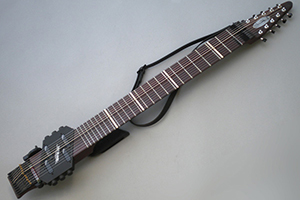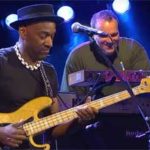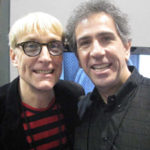Somehow, it’s a bigger deal for bass players than guitar players
By Jon Liebman
Week of March 16, 2020
If you’ve ever seen, heard, or played a Chapman “Stick,” you know what a marvel it is among musical instruments. The whole concept of the Stick is a total game-changer for the way music is conceived, approached, and performed.
Brainchild of brilliant inventor Emmett Chapman, the Stick was originally conceived to facilitate a new way of playing the guitar. A very new way. The Stick introduced ground-breaking methods of musical expression previously unimagined, even by Chapman himself.
What’s even more fascinating is how the Stick captured the attention of so many bass players, much more so than guitar players. I had a great conversation with Stick virtuoso Kevin Keith in an interview published this week on FBPO. Kevin’s enthusiasm for the Stick is palpable, to say the least.
The concept of the Stick involves holding the instrument more vertically than a standard guitar, facilitating a two-handed tapping technique, affording the player the ability to play bass lines, chords, and solos, all at once, with a dramatically greater sonic range than any guitar.
Even the tuning of the strings is somewhat bizarre; half the strings are tuned in fourths, the other half in fifths. That’s a lot to wrap your head around.
Rather than finding it daunting, however, Kevin embraces the tuning configuration, as he finds it enables him to push the boundaries of his playing even further. “One of the coolest things about fifths tuning,” he says, “is that to play a chord like this, or like this (demonstrates chord shapes with left hand) would take two hands on the piano, from the lowest note to the highest note.” On the Stick, however, the same result can be accomplished with just one hand, “so it gave me all this range, it gave me all this flexibility,” he continues. “It gave me this huge pallet of sound, yet I could still have one hand remaining.”
The stick has expanded the breadth and the capabilities of the bass meteorically. Perhaps it’s all this unprecedented potential that attracted bass players like Kevin, as well as Tony Levin, Alphonso Johnson, Don Schiff, Steve Adelson, and so many others.
Bottom line: Apparently, it’s a bigger deal to a bass player to be able to add chords, melodies and upper register soloing than it is to a guitar player to add low-range bass lines to their playing. After all, in the mind of a guitarist, that’s what bass players are for.
How about you? Do you have a thought on this subject? Leave a comment below. I’d love to know what you think. In the meantime, you can check out my interview with Kevin here.





Excelleeeeent interviews, thank you!
I’m a long time bassist (electric/double bass) who has had the honor and pleasure of knowing Steve Adelson for over 20 years, we’ve played together (and alongside each other on many occasions.
He’s a great ambassador of the Stick and rightfully so: sometimes amazing, other times breathtaking. That said, I don’t for a moment see the Stick as a “concern” or a “competitive voice” to the traditional bassist. Both instruments have their place in the sonic spectrum and ultimately on the performance stage and can, very successfully, coexist within the proper arrangement. As always, It’s up to the individuals involved to see either a threat or an opportunity!
It’s not what you use to make the music that’s important – it’s the music that you make with what you’ve got. I just read an article in a local jazz post defending the valve trombone against those who would claim that only a slide trombone was a “real trombone.” And I get tired of the “only an upright is a real bass” or “only an acoustic piano is a real piano.” Or how many strings a bass has. It’s not the instrument that’s important – it’s the musician and the music. Use whatever tools you have/need to do it.
Exactly, Charlie. Like a good painter, I have many brushes, palette knives and sponges to create the appropriate “sound” for the piece. But ultimately, it’s up to me to choose which, if any, are necessary. It’s really about dynamics and how to use the “space” to support the piece.
As a bassist playing on a standard bass I’d have one line to create the support to a given melody. With the Stick, NS/Stick I can play my bass line and now simultaneously add with it rhythm, chordal harmony, melody and percussive intent… which then makes it a super bass line. Example: The bassline on “Just my imagination” beautiful and perfect as is. Imagine being able to create a line like that while playing the chords and rhythm on top of it. You would then be able to create all at once the bassline drive inside the chordal emotional feel.
“Magic”!
/Don